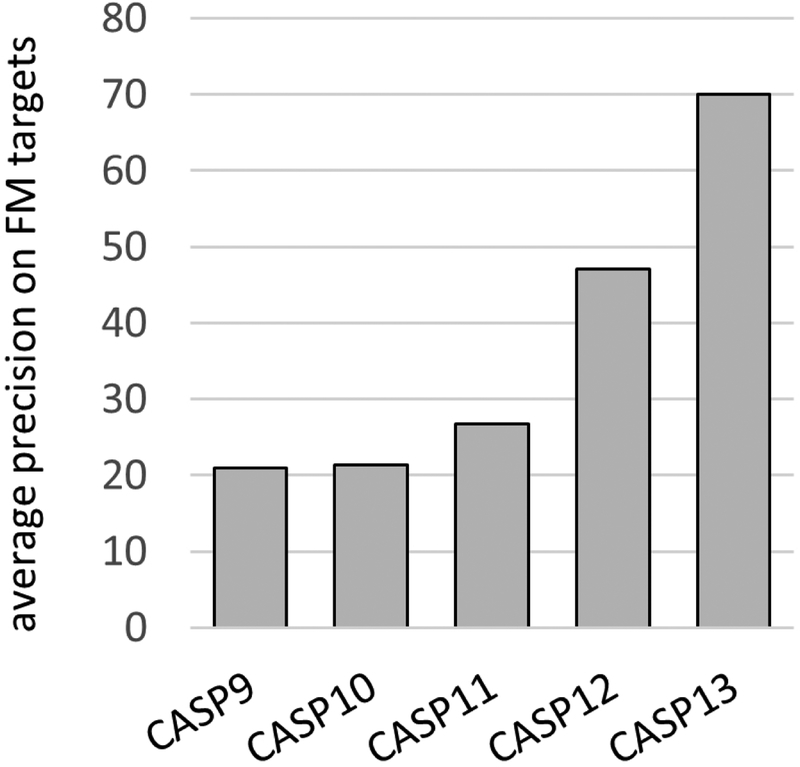Figure 2:
Best contact prediction precision in recent CASPs. CASPs 9 and 10 continued a long trend of low precision. CASP11 shows a small advance, while the two most recent, CASP12 and 13, show dramatic improvements. In CASPs 11 and 12 progress is the result of more sophisticated statistical models, together with largely conventional machine learning. The further jump in CASP13 is the result of the effective deployment of deep learning methods. (Average fraction of correctly predicted contacts for the most confidently predicted L/5 contacts 24 or more residues apart in the sequence, where L is target length. Free modeling targets, average for the best performing group in each CASP. Contacting residue pairs defined as those with less than 8 Angstroms between Cβ atoms).

